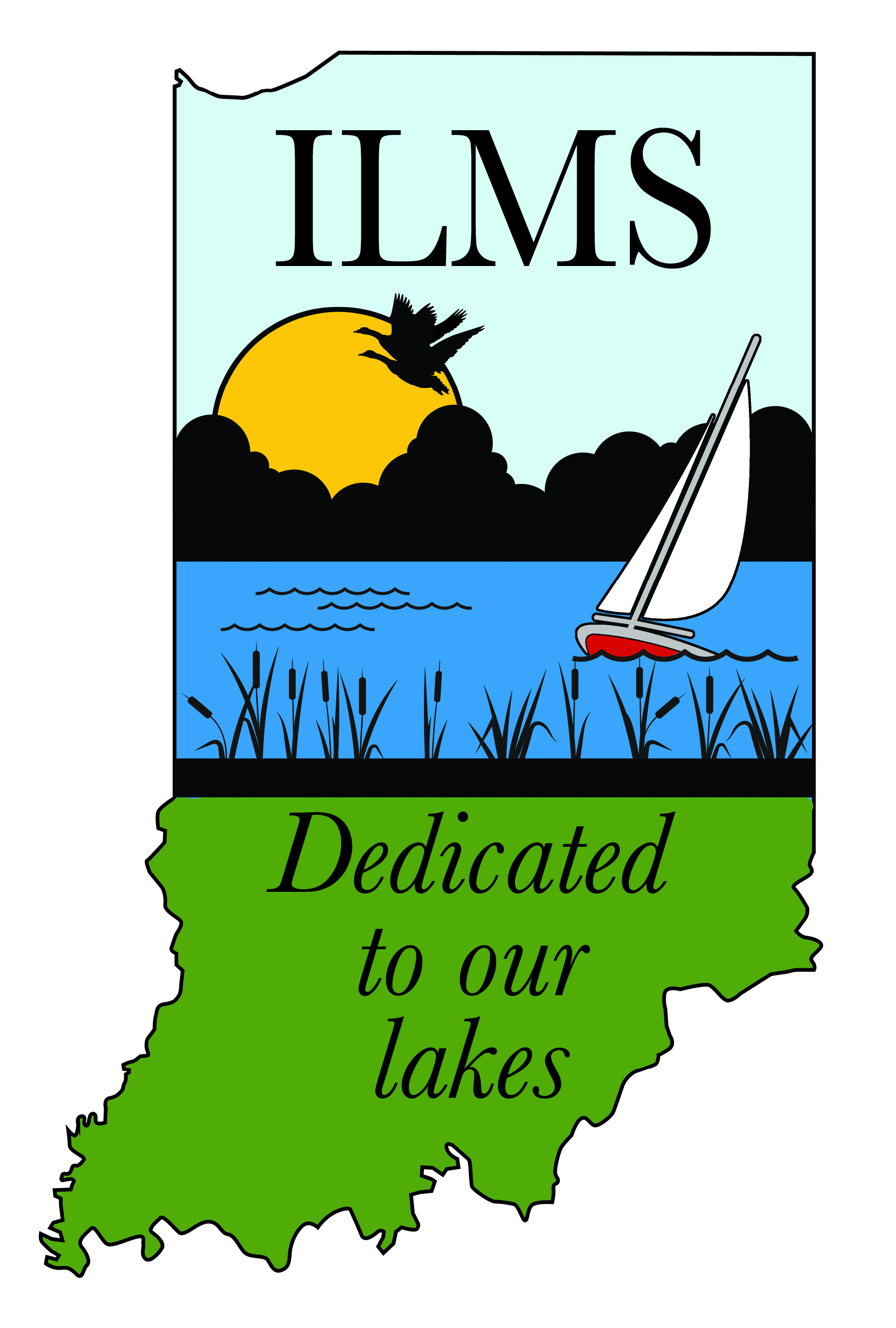
Indiana Lakes Management Society
| Indiana lakeSmanagement society |
Development
Funneling
The issue of funneling…
Funneling is an increasingly critical issue for many lakes as more and more residents seek the joy of lake living. Funneling is described as when someone purchases a lakefront property, acreage near that lake property, and then permits lake access for the now developed larger property’s residents and visitors. A complex political problem for many counties, the results of funneling are illustrated in the simplified schoolboy drawings below…

The drawing above depicts a lake with modest, single-family residences. The one boat shown is, of course, unusual in today’s recreationally minded society. Most lake-dwellers own an average of 2½ motorized vessels. So, it is neccessary to consider multiple watercraft at today’s Indiana lakes. While this illustration is small, the principles of funneling apply.
Note the “vacant” property at the top of the drawing.

In the drawing above, the “vacant” property has been purchased and become part of an adjacent development. Shown are the simple results a large development with a lakefront access property could have on a lake, considering only boating and boat population. Again, this illustration presumes only one watercraft per household. The lakeshore resident boats are in green, and the development homeowner boats are in pink.
The result can be almost immediate over-use of the lake.
The issue is not who has the right to use our natural resources, but the impact an overabundance of people and motorized watercraft can have on the lake ecosystem.
Determining exactly how much use a lake can withstand in the constant churning brought about by watercraft is difficult. Many ecologists say the “limit” may only be determined when the ecosystem is near collapse.
For information on the limits or restrictions on lakeside development in your area, contact your local planning or zoning department.
Model Ordinances
We all have them, whether they govern the number of houses allowed on a plot of land or provide guidance on where mailboxes should be placed on our property. With regard to natural resources, ordinances allow an additional layer of protection for our natural resources. Ordinances are typically enacted by local governments when additional legal authority is needed to shape the community, guide development, and ensure that our natural resources are present for future generations.
Several websites offer sample or model ordinances. These ordinances serve as examples which your community can use to craft their own ordinance. The U.S. Environmental Protection Agency (USEPA) and the Center for Watershed Protection (CWP) both offer model and real world ordinances. The USEPA focuses on the following categories of ordinance: aquatic buffers, erosion and sediment control, open space development, stormwater control operation and maintenance, illicit discharges, and post construction controls. The CWP offers example lake protection and protection of wetland function ordinances. Links to both of these entities are included below. Additionally, several Indiana communities are revolutionary in protecting their natural resources. These include Porter County’s unified development ordinance, Kosciusko County Lakes Development ordinance, and Lake Monroe unified development ordinance.
Other resources:
Center for Watershed Protection Model Ordinance Library
Porter County’s Unified Development Ordinance
Kosciusko County Lakes Development Ordinance The language is in Section 3.11.11-Lake Access Developments.
Funneling: A Threat to Indiana Lakes